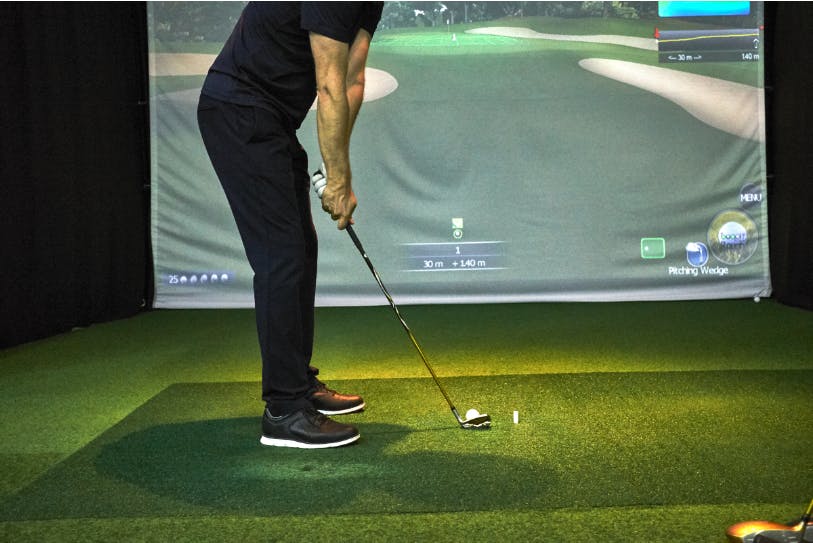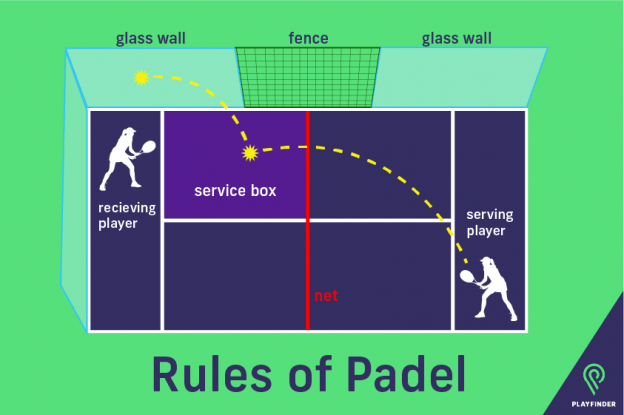How Authentic Sport Simulators Can Elevate A Player’s Game
19 March 2024 • By - Bert Pauw
Sports simulators have become increasingly popular as they have advanced, and today they provide realistic and immersive experiences for players across a variety of sports. The basic models have evolved with technology that is so sophisticated, in terms of authenticity, that they now proudly stand alongside traditional indoor sport options supplementing sports coaching, as well as supporting game practice and matchplay. They are considered valuable tools that have revolutionised sport.
This article explores the popularity of simulated sports, how they can elevate a player’s game, and their relevance for those in the sports industry, professionals and amateur players alike.
Simulation technology is popular for every sport
As a nation of sports lovers, cutting-edge simulation technology provides realistic virtual experiences spanning a variety of sports. To name a few, cycling, running and golf have witnessed a surge in popularity, as many have become intrigued to improve their skills in a virtual setting that invites them into a fully immersive world of sport
Technological appeal
Today’s advanced simulators use an intelligent mix of HD graphics, motion tracking tech, AI and pressure sensors that take realism to the next level. It is this combination of smart tech and authentic brilliance that succeeds at motivating players of any particular sport to improve.
Players and athletes can set foot in a simulated, virtual environment that they can control to whatever sporting level, action or venue they desire at any particular point, time and the location. Free from distractions and actual competition, the technology allows players to hone specific skills, practise as many times as needed and benefit from specific data, instructions and feedback that is recorded and visualised to the user in real-time.
Immersive training opportunities
Balancing the tech of simulators with real-world practice sessions is a great way to work on improvement areas, elevate a person’s techniques and strengthen their overall performance. Feeling immersed in a virtual version of a sport someone loves will inspire them to grow their confidence and endurance alone. So, let’s review some of the sports that have benefited from sports simulation.
Cycling
Riders are presentred with realistic routes and features enabling them to automatically adjust their resistance and mimic real-world routes. Modern cycling simulators can replicate very subtle grades on ascents, and depict exact trail conditions to ensure players are fully immersed. Virtual cycling also allows certainty and flexibility within a cyclist’s training programme, removing such barriers as inclement weather and unsuitable local cycle routes, from affecting their progress.
Golf
For enthusiasts wanting to improve their game, simulators are transforming practice sessions. Benefitting a golfer’s genuine game, they provide expert advice and high-tech graphics that invite players to train like a pro on the best fairways in the world. The simulator uses club/swing sensors and 3D mapping to mimic ball flight, honing the mechanics of a swing with instant feedback and video overlay to sharpen skills.
Running
For runners, advanced treadmill simulators provide an immersive running experience with virtual courses, engaging workouts and training programmes to prepare runners for their next marathon or help them to achieve their Personal Best (PB) at a parkrun. Simulators also assist athletes to maintain intensity in the offseason, and remain at peak fitness.
Tennis
AI and sensors recreate the true dynamics of a tennis game for seasoned players or anyone curious to learn the game. Players receive analytics and can practise against simulated opponents to raise their game. The sensors record spin, speed and ball placement to help players perfect their skills for an actual match. They also develop stroke technique, shot placement and strategies that all help to advance match play. Like the football simulators that depict a favourite player, players can also hit with Roger Federer!
Skiing and snowboarding
When enjoying winter sports in the Alps is not achievable, skiing and snowboarding simulators have wraparound projection and platforms that replicate the criss-crossing motions of carving down a snow-filled piste. For any skiing enthusiasts who have never been on a slope, the simulators give them a real sense of being on a snow capped mountain, whilst building balance and edge control, boosting confidence.
Sporting enjoyment, engagement and accessibility
Across the sporting sector, businesses are ever ready to invest in simulators for training, which is the case in partnerships in motorsports and football. Sport simulators offer greater entertainment and increase fan engagement. High-tech simulators continue to be installed in VIP fan zones and corporate hospitality spaces at many major sporting events like Wimbledon, Silverstone and The Open.
Furthermore, according to research, most sports simulators in the UK are found in sports academies, clubs, stadiums and training institutes with increasing uptake in entertainment zones and hotels. It’s likely that more simulators will become accessible within leisure centres and gyms across the UK for the public to enjoy, and to attract younger generations into sport generally. Home simulators have also grown in popularity and take pride of place in many home gyms.As well as being hugely entertaining, educational and elevating a player’s game-play techniques and tactics, immersive realism is known to support wider accessibility. It offers the ability to break down barriers of inequalities in sports for those who might be interested but lack the confidence, funds, or ideal geographical location to get involved.
Simulators are therefore great advocates for entry-level grassroot players and youngsters keen to tentatively try a sport out. Likewise, in the right public setting simulators are great for amateurs or club players in a community who are keen to build their confidence with no-pressure practice. Meanwhile, top performers can use them for focused training with granular analytics.
The future of virtual sports
Immersive technologies such as virtual reality (VR) and augmented reality (AR) are making sports simulators continually more engaging, accessible and effective. Impressive sport simulation is paying dividends for anyone wanting to perfect their athletic performance, improve their tactics and establish a clear focus in practice sessions. Boasting authentic visuals and graphics, they accurately recreate world-famous venues and offer advanced sensors and analytics to enhance gameplay and skill development.
With further innovations on the horizon like cloud gaming, VR, motion capture and advanced AI, sports simulators in 2024 and beyond promise to only become more realistic, accessible and transformative for players. The UK’s strong sports culture and demand for ever-advancing technology will continue to fuel widespread adoption of next-generation sports simulators for pro sports to public facilities, across sporting venues and at-home setups.
About the author:
Annie Button is a professional freelance writer who has written for a variety of prestigious online and print publications. She specialises in lifestyle, business, digital marketing and branding.






